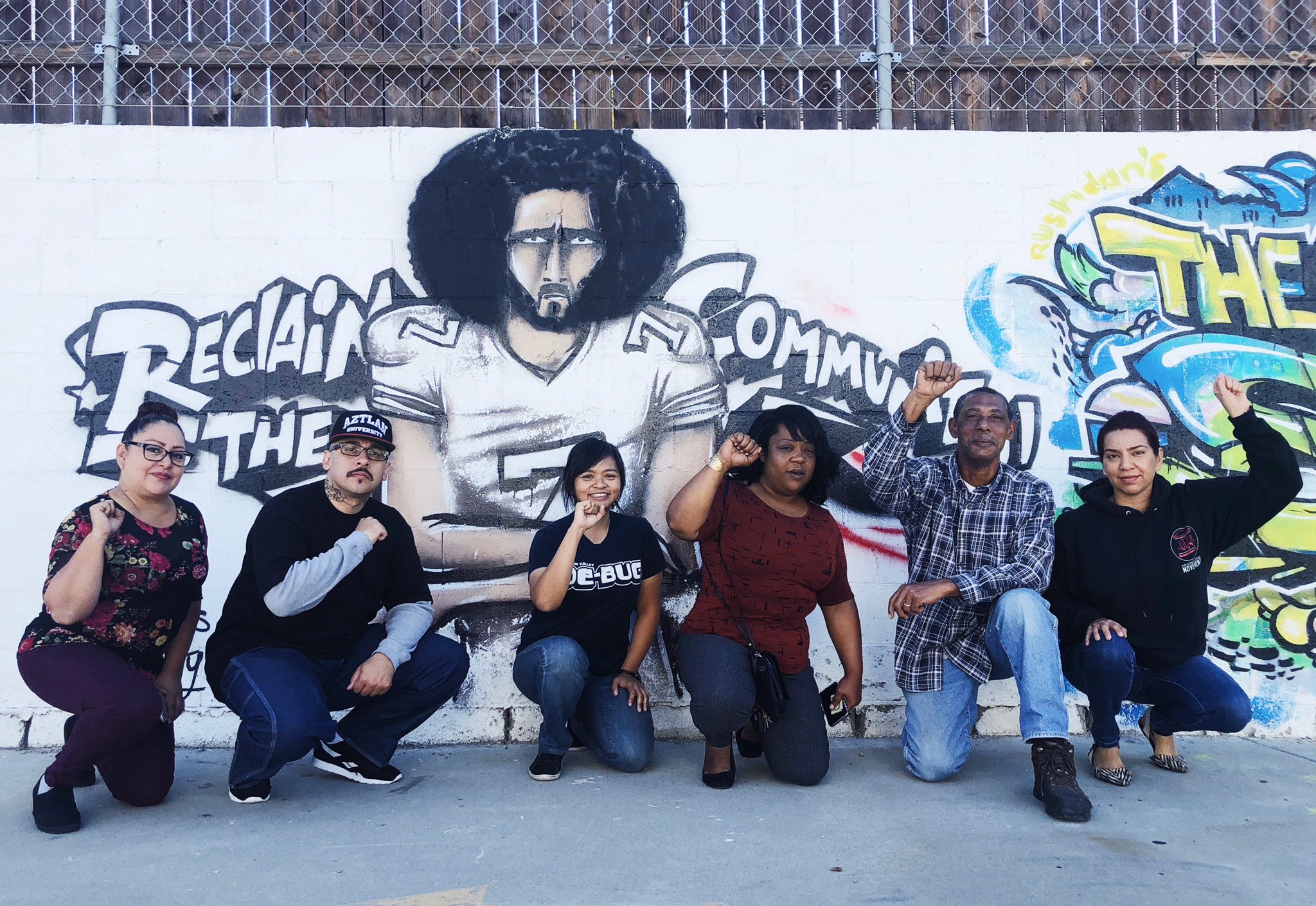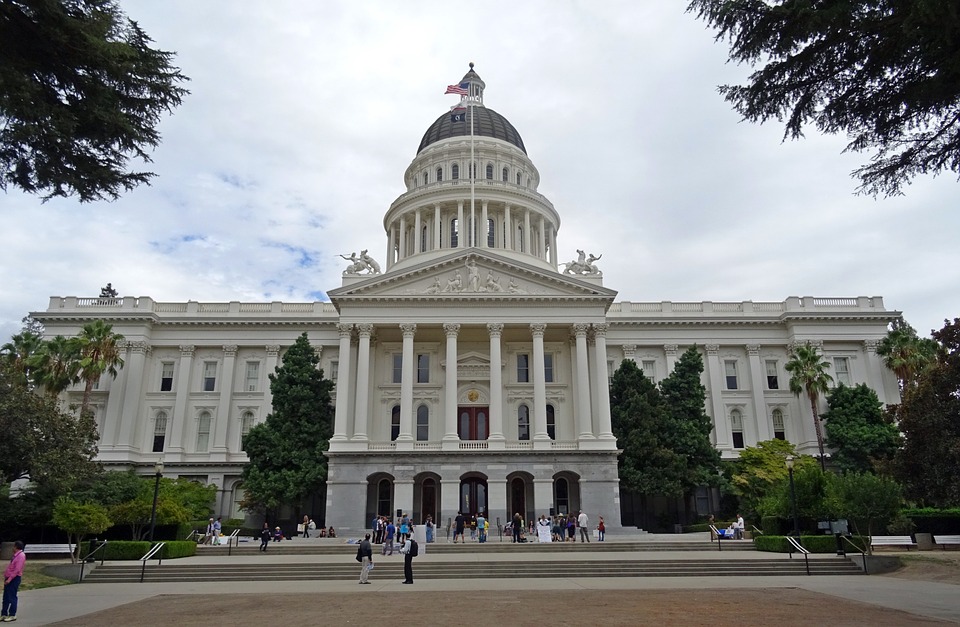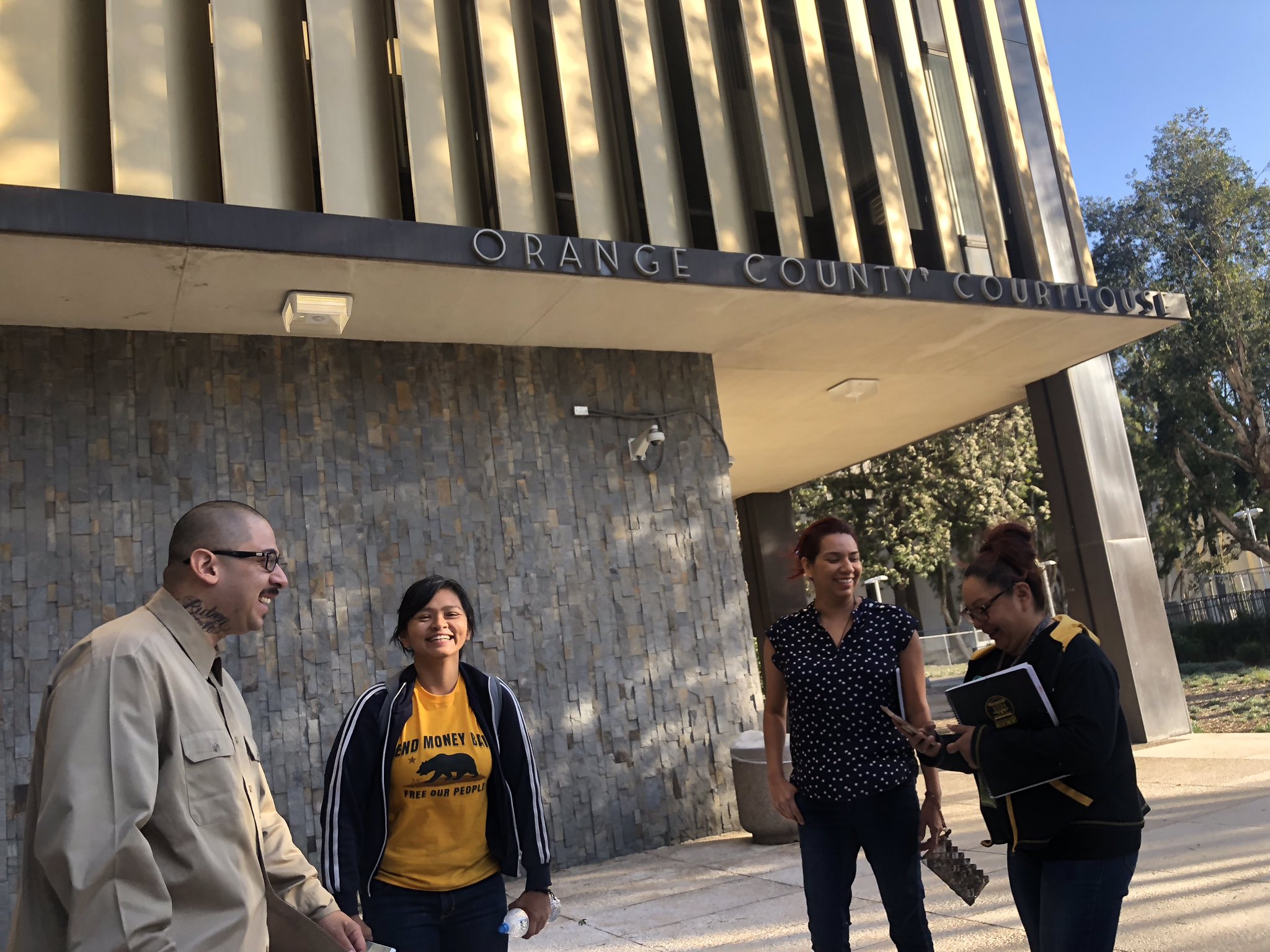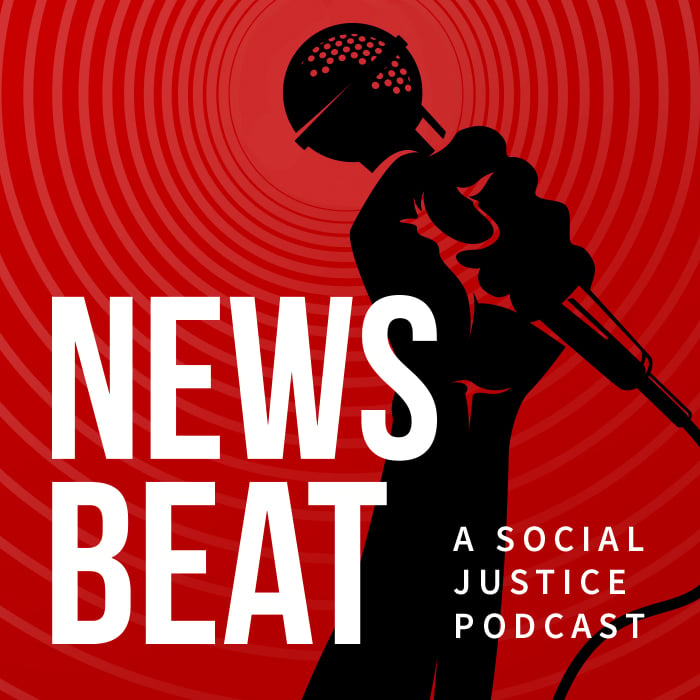
In the age of Trump, no state has repudiated Trumpian politics more than California.
Nearly two years into Donald Trump’s presidency, California Attorney General Xavier Becerra has filed more than three dozen lawsuits challenging the White House on everything from immigration, environmental causes, education, and net neutrality.
From legalizing weed to prohibiting authorities from questioning immigrants about their legal status and playing host to a global climate summit, the Golden State is pursuing an unapologetically progressive agenda.
Even the state most synonymous with liberalism still has its fair share of warts, however. Take California’s attempt last summer to overhaul its criminal justice system, ostensibly through meaningful bail reform.
In August, the state legislature passed a historic law that abolishes bail in California, a landmark achievement. Yet as a critical vote neared, something unexpected happened. An amended version of the bill included many recommendations of the policy-making arm of California’s judicial system, effectively alienating the grassroots organizations that had initially co-sponsored the bill, called SB 10.
By the time the bill was modified, it was too late. The legislature had the votes. Furious, national and local groups withdrew their support.
On Aug. 28, Gov. Jerry Brown signed SB 10 into law. Some of the bill’s leading supporters were in attendance, including co-sponsors in the state Senate and Assembly, and California Chief Justice Tani Cantil-Sakauye. A press release touting how the state was revamping the criminal justice system included a quote from Tom Steyer, a billionaire Trump critic and Democrat mega-donor, perhaps best known for foreboding political ads saturating cable news.
“Our path to a more just criminal justice system is not complete, but today it made a transformational shift away from valuing private wealth and toward protecting public safety,” state Sen. Bob Hertzberg, SB 10’s co-sponsor in the Senate, said in a statement, the day of Brown’s celebratory signing.
In thanking the state’s chief justice and his colleagues for moving the state to such a “historic” moment, Hertzberg said, “California will continue to lead the way toward a safer and more equitable system.”
Sponsors-turned-critics of the law are not as optimistic. They argue the last-minute alterations grant judges sweeping powers to lock up suspects, indiscriminately.
So, what exactly happened?
With the passing of SB 10, California has effectively abolished money bail, making California the first state in the country to do so—an accomplishment that generated a flood of positive headlines.
Still, prison reform advocates were outraged to learn that included in the amended bill was a provision that gives judges the discretion to jail defendants in most felony cases. The law creates a risk-assessment system that will vary by county. The system will likely use a broad set of data points—zip code, age, and past criminal history—to determine someone’s risk factor. Advocates fear that most people charged with felony crimes will be jailed prior to trial.
“What SB 10 does is it gives judges the unbridled power to decide who to keep in and who to release.”
–Jeff Adachi, San Francisco Public Defender
Most defendants charged with misdemeanor crimes will be released following an arrest, while the fate of those labeled “medium” and “high” risk—mostly felony cases—will be in the hands of the court.
Civil rights and other reform groups have long opposed computerized risk-assessments out of fear that they perpetuate pre-existing racial disparities in the criminal justice system. Another central point of their argument goes like this: If judges have spent years imposing high bail amounts—especially in California, where the average bail is five times the national rate—then why would anyone expect them to release a suspect who presents even the slightest risk of skipping court?
Listen: How Money Bail Crushes the Poor and Inflates the World's Largest Prison State
The elimination of bail in California comes as municipalities throughout the nation are considering sweeping changes. These efforts have led to bail reform in New Jersey, New Mexico, and Kentucky. Washington, D.C. largely did away with money bail in the 1990s. Meanwhile, legal challenges or pressure from civil rights groups have led to modifications across the country, including several dozen cities in Alabama.
Last summer, the nation’s gaze turned to California. One organizer said he wasn’t so naive to think the process would be simple. But few predicted the eventual outcome. As a result, a combination of resentment, confusion, and outright indignation persists.
The sense of betrayal cuts so deep that groups have condemned state lawmakers for their “legislative bait and switch” and passing “empty reforms.”
 The capitol building in Sacramento. Lawmakers this summer approved a bail reform bill that once had the support of dozens of grassroots groups.
The capitol building in Sacramento. Lawmakers this summer approved a bail reform bill that once had the support of dozens of grassroots groups.
BAIT AND SWITCH
With 2.2 million people behind bars, the United States far and away leads the world in incarcerating its own citizens. That includes 750,000 people locked up in local jails, of which 70 percent have not been convicted of a crime.
In courts across America, a bail hearing is a tragically routine procedure. A defendant is imposed a bail amount, and they’re free to go if they pay for their own freedom or retain a bail bondsman. Others accused of low-level crimes may be released on their own recognizance, and those deemed dangerous or a risk may be remanded to the court.
The majority of Californians are detained prior to trial.
A Human Rights Watch report highlighted the extent of the problem:
“Those locked up pretrial are overwhelmingly poor, working class, and from racial and ethnic minorities. California’s median bail rate is five times higher than that of the rest of the country. There is a clear correlation between the poverty rate and the un-sentenced pretrial detention rate at the county level in California. The state is also plagued by profound racial disparities in pretrial detention rates due to racial disparities in arrest and booking rates. The rate at which black people are booked into California jails is many times higher than for white people—for example, it is nine times higher in San Francisco.”
John Raphling, a senior researcher at Human Rights Watch and a former public defender in Los Angeles, said SB 10 doesn’t solve the underlying problem of people facing an extended jail stint before trial.
“They got rid of money bail. And that was sort of the sound bite, the sales pitch. We're going to get rid of money bail, and everyone forgot to think: 'And replace it with what?'” Raphling told News Beat in a phone interview. “And so what they've replaced it [with] now is a system that allows judges just to simply lock people up without money bail. In other words, you're locked up and you're not getting out.”
Jeff Adachi, the San Francisco Public Defender, an elected position, was one of the few to express apprehension early on. In November 2017, he penned an op-ed in the Sacramento Bee warning of a judicial takeover of SB 10 by the Judicial Council, the policy-making arm of the state’s judicial system. His point proved to be prophetic.
“Bail reform was supposed to be about providing people with an opportunity to be released from jail if they did not present a public safety risk,” Adachi told News Beat over the phone. “What SB 10 does is it gives judges the unbridled power to decide who to keep in and who to release.”
How several co-sponsors came to strongly oppose SB 10 has emerged as one of the unexpected storylines amid debate over bail reform. It’s one thing for language in a bill to change in the name of compromise, or for relationships to fray during passionate legislative debates. It’s something else entirely for dozens of supporters, whether they were co-sponsors or proponents cheering from the sideline, to be so unified in their condemnation.
“History shows us that the fight against systemic oppression and manufactured criminalization is long,” a coalition of groups said in a strongly worded open letter distributed after SB 10 became law. “We are unified, we are innovative and true justice is on our side. We have the endurance, we have the power, and we will win.”
DEFENDERS
Adachi’s career as a public defender in the Bay Area has spanned 32 years, half that time in his elected position. His calm demeanor belies the extraordinary number of cases his office confronts on a daily basis.
His office is responsible for about 6,000 misdemeanor and 10,000 felony cases each year. Public defenders serve one of the most critical roles in the U.S. justice system, as they’re appointed by the court to defend mostly indigent clients.
Adachi has witnessed firsthand the crippling toll excessive bail amounts have on the accused and their families. He also understands that people accept guilty pleas—even if they did not commit a crime—to avoid being marooned inside a jail cell for weeks on end. Plea rates in felony cases in both state and federal courts are exceedingly high.
“Those locked up pretrial are overwhelmingly poor, working class, and from racial and ethnic minorities. California’s median bail rate is five times higher than that of the rest of the country."
–Human Rights Watch
Why someone would choose to admit fault, even if they’re innocent, is not as incomprehensible as it seems. If being jailed isn’t hard enough, pretrial detention often leads to a loss of work, missed rent payments and the inability to care for children or elderly family members.
For someone who has experience working with indigent people on a daily basis, it’s no wonder Adachi was “jubilant” with the first iteration of SB 10.
Bail in San Francisco is “sky high,” said Adachi, which is why he fiercely opposes it. He credits the legislature for following through on bail reform. But at what cost?
“What [legislators] would tell you now, or what I've heard them say is, 'Well, you know, we slayed the dragon,” Adachi said. “Well, what about the other half?”
“For most people, being in jail for just a few days not only disrupts your life, but you could lose your job, you can lose your apartment,” Adachi added.
“We have a presumption of innocence in this country, and part of it means that you're not presumed to be guilty,” he continued. “And so unless you are a huge danger to society, you should be released pending the outcome of your trial.”
Raphling is skeptical that SB 10 will suddenly change the culture of the courts.
“We've already seen how they act because in the past they just set up money bail” that defendants couldn’t afford, Raphling said of judges. “Well, how do you think they're going to do now that they have this basically unlimited power? And the new law didn't then say, ‘Oh, but you have to have a hearing with all of these requirements.’ It says you have to have a hearing, but the hearing has minimal requirements.”
“Basically the prosecutor can get up and say, ‘Oh, I think he's dangerous,’” he continued. “Or they can read the arrest report and that's enough for the judge. The judge can rely on hearsay. There's no requirement that a witness actually present real evidence...There's very little procedural requirements. And for procedural requirements, due process in America, you're not supposed to take away people's freedom without due process.”
THE ACTIVISTS
SB 10 was first introduced in December 2016. Many of the activists who had spent years fighting for bail reform were personally helping mold the bill into meaningful reform. That’s what makes the late changes so difficult to stomach.
“This is not what real progress looks like. Progress does not create a false choice between ending money bail or expanded tools of detention. Progress eliminates them both,” read a letter sent by a coalition of groups after the bill was passed. It was signed by Californians United for a Responsible Budget (CURB), JusticeLA, Essie Justice Group, and Silicon Valley De-Bug, among others.
The letter went on to eviscerate SB 10—and in effect, the elected officials who approved it—for abandoning the communities that demanded change.
“What we heard from our member organizations that were co-sponsors was that the weekly calls that they were having with the author's office with the other co-sponsors stopped. That there was radio silence from those working on the bill,” Ivette Alé, statewide co-coordinator for CURB, told News Beat in a phone interview.
It wasn’t until about a week before the bill went before the Assembly Appropriations Committee that some of the co-sponsors saw the final version, which was “a completely different bill,” she added.
“This new version of the bill dramatically expands the role of the judiciary,” Alé said, firing off a litany of concerns. “It puts pretrial services directly in the hands of probations, and it mandates the use of algorithmic-based risk assessment instruments across the state of California.”
Contributing to the unease is the fact that there’s no set of standards or guidelines underpinning risk assessment systems. The onus is on individual counties to come up with their own framework. And unlike the previous incarnation of the bill, SB 10 does not permit community-based oversight of these tools, Alé said.
The express purpose of a risk-assessment system is to predict whether someone will be re-arrested or return to court. According to Alé, other areas that have used such systems rely on a broad set of metrics, such as age, previous arrests, and even a defendant’s zip code, and make a determination.
That someone may miss a court appearance because they don’t have enough money for public transportation or are battling substance abuse issues aren’t factored into the equation, Alé said.
Raj Jayadev, the co-founder of Silicon Valley De-Bug, shares Alé’s concerns.
SV De-Bug is based in Santa Clara County, where the plea rate is an astonishing 98 percent. That means people are accepting deals with prosecutors instead of going to trial.
“We have people that are pretrial for years,” Jayadev said over the phone. “I mean literally, we know folks that have been pretrial for five to seven years. And I'm talking about a dad who had a baby, who, you know, hadn't held the baby. Now that baby’s in second grade.”
According to a Santa Clara County Civil Grand Jury Report for 2016-2017, 122 felony inmates had waited three years or more for “settlement, trial, or sentencing.”
The report noted that “justice delayed crowds jails, making it hard to manage inmates. Arrestees’ lives remain in limbo. County taxpayers foot the bill for inmates who could be released or be serving their time in prison.” The county jail in Santa Clara also had one of the highest incarceration rates in the state during that period.
 Members of Silicon Valley De-Bug outside a courthouse in Orange County. (Photo credit: Silicon Valley De-Bug)
Members of Silicon Valley De-Bug outside a courthouse in Orange County. (Photo credit: Silicon Valley De-Bug)
FORWARD, ALWAYS
So what’s next for the prison reform advocates who expended so much time and energy lobbying for what they deem to be a now-imperfect law?
All roads lead back to bail, which won’t be eliminated until October 2019.
In January, a California appellate court, in a landmark case, ruled that judges must take into account a defendant’s ability to pay before settling a bail amount. It centered around a San Francisco man named Kenneth Humphrey, who was arrested for allegedly stealing $5 and a bottle of cologne from a man whom he claimed owed him money. The judge initially set bail at $600,000.
"We know folks that have been pretrial for five to seven years. And I'm talking about a dad who had a baby... hadn't held the baby. Now that baby’s in second grade.”
–Raj Jayadev, Silicon Valley De-Bug
The case will soon be heard before the California Supreme Court. Adachi’s office will be representing Humphrey, who has become the face of bail reform in California.
Since the Humphrey decision, SV De-Bug has “been in court every single day observing and trying to impact every single felony arraignment,” Jayadev said.
SV De-Bug provides daily updates on Twitter, using the hashtag #DayInCACourt. The Twitter briefings focus on egregious amounts of bail set by judges while also providing a behind-the-scenes look of the assembly line-like nature of criminal courts. On other occasions, the group has published accounts of people’s own experiences with bail.
#DayinCACourt Again, we proved that community support is essential in determining release. Parents of a young man showed up at arraignment today and spoke. Guaranteed: if they weren't there, this young man would've stayed in jail. But Judge agreed to release over DA's objection.
— SV De-Bug (@svdebug) October 24, 2018
WATCH: Ms. Cheryl of San Diego's participatory defense team Free San Diego: "Bail felt like something they made up to keep my son in jail. "Follow her and organizers around the state fighting for pretrial freedom: https://t.co/a3vs6aGnmT
— SV De-Bug (@svdebug) October 14, 2018
#ProtectYourPeople #DayinCACourt pic.twitter.com/xhs0Yet8uP
At the same time, the San Francisco Public Defender’s Bail Unit is filing a motion in every case involving bail, which Adachi said most people don't know is possible.
“It drives the judges crazy,” he said, “but it's one way that we can ensure that people are getting a fair hearing. And we're trying to urge other public defender offices to do the same.”
As for SB 10, opponents are hesitant to hedge their bets on the law being modified before it takes effect.
It took nearly two full years for the bill to become a law, and it’s unclear if elected officials are willing to expend more political capital adapting something that only months ago they celebrated as legitimate reform.
“There's definitely members that we work with and that I personally know have the best intentions for our community. And I think they believe they can fix something like this, but undoing harmful legislation takes decades,” said Alé, citing the decades-long war on drugs and Bill Clinton’s three-strike law.
“These are things that we're starting to chip away at.”




.jpg)





